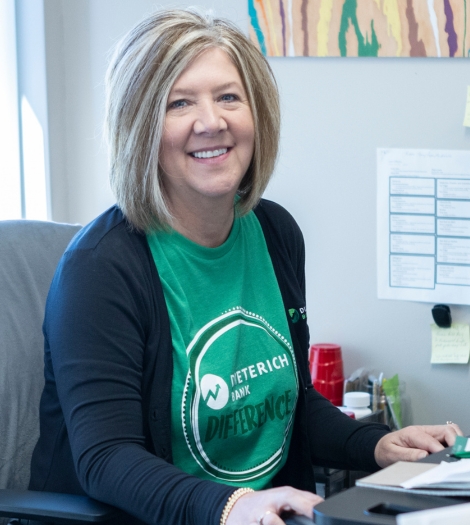Summary
Understanding the components of your mortgage—Principal, Interest, Taxes, and Insurance (PITI)—can help demystify your monthly payment and empower you to save money over the life of your loan.
Ever felt like your mortgage statement is written in a secret code? You’re not alone.
Unless you have enough money in the bank to purchase a home outright, chances are that like almost all first-time homeowners, you have—or will have—a mortgage. But mortgages, while necessary for homeownership, can also be complex and difficult to understand. Many homeowners wonder how their monthly payment is being calculated and where their hard-earned money is going each month. If you break out in a sweat trying to decipher your mortgage payment, there are some simple steps that can help you finally make sense of it.
PITI is an acronym used across financial institutions to help homeowners understand their mortgage bill. It stands for:
- This is the amount of the loan that you will have to pay back.
- Consider this to be the cost of borrowing money from a bank or other financial institution. This number varies depending on your interest rate, the principal, and the length of the loan.
- Property taxes are assessed by your local government and will vary from region to region.
- This includes both homeowners insurance, which protects you and your lender from damage to your property or liability claims, and mortgage insurance, which may be required if you made a small down payment.
These are the four main components of your mortgage. There may be other fees on your mortgage as well, such as loan processing fees and Homeowners Association (HOA) fees. However, all mortgage payments include these four.
But how are these monthly payments determined, and what can you do to save money on them?
1. Principal – The Foundation of Your Loan
The principal is the original amount you borrow to purchase your home and is the main factor in determining the amount of interest on your loan. It is the cost of the home minus the down payment (most likely 20% of the cost of your home).
Each mortgage payment you make includes a portion that reduces your principal balance. This portion is what pays down your loan and builds home equity. Making extra early payments will help pay down your loan faster and save you money on interest over the life of the loan. And while most mortgages don’t penalize early or extra payments, it’s best to check first. Dieterich Bank offers online calculators to see how big of an impact early payments can have!
2. Interest – The Cost of Borrowing
Interest is the fee you pay for the privilege of using the lender’s money. Because lenders are taking a risk by lending money, interest rates ensure that they are able to make money and mitigate their risks. The bigger the risk for the lender, the higher the interest. Maintaining a high credit score allows the lender to give you a lower interest rate and save you money over a decades-long loan such as a mortgage.
When looking at your total cost of borrowing, it’s important to understand the difference between interest rates and an Annual Percentage Rate (APR). The interest rate is the percentage of the principal that the lender is charging for the loan. This is based on a few factors, such as the current market, the property’s location, and your credit. The APR includes both the interest rate and additional fees such as closing fees, mortgage insurance, and more. The APR is the total yearly cost of your loan and is more accurate when it comes to what your monthly and yearly costs will be. Some banks may offer higher interest rates but lower APRs, and vice versa.
As you pay down the principal, the portion of your payment going towards interest will decrease. This is known as amortization. Understanding your amortization schedule can help you understand exactly where your money will be going over the life of your loan.
Dieterich Bank’s mortgage specialists can help you find a loan with a competitive interest rate and explain the amortization schedule in detail.
3. Taxes – Your Contribution to the Community
Property taxes will likely be included as part of your mortgage payment. These taxes are levied by your local government and are based on the assessed value of your home. These taxes are used to fund public services and infrastructure.
Property taxes can also change. Factors such as home improvement projects, rising housing prices in your area, and local budgetary needs can all affect both your home’s assessed value and the local property tax rate. This means that your total monthly payment can vary from year to year.
While property taxes are only paid once a year, many lenders collect property taxes as part of your monthly payment and hold them in an escrow account to pay your annual tax bill.
Estimating your property taxes and including them in your mortgage payment will avoid financial surprises. Unsure of where to begin? Dieterich Bank can help you navigate the housing market for first-time homebuyers in southwest Illinois.
4. Insurance – Protecting Your Investment
Your mortgage payment will also include homeowners insurance. Homeowners insurance protects your home from damage caused by fire, theft, and most natural disasters. Depending on where you live, you may choose to add more specific types of insurance, such as earthquakes and floods. If you have Private Mortgage Insurance (PMI), which is required if you put less than 20% down on your home, it will be included in your monthly mortgage payment as well.
Similar to taxes, insurance payments are due annually. However, they will be collected monthly and held in escrow until the yearly due date.
Shop around for affordable homeowners insurance options and include the premiums in your mortgage with Dieterich Bank.
5. Putting it all Together – Reading Your Statement
There will be slight variations from statement to statement, but the Consumer Financial Protection Bureau specifies several items that must be included on every mortgage statement:
- The principal loan amount
- The current interest rate
- The date on which the interest rate may next reset
- A description of any late payment fees and any prepayment fee to be charged
- Information about housing counselors
- Phone number and email address for borrower to obtain information about the mortgage
- Other information the CFPB may prescribe in regulation
If you’re unsure about anything that appears on your statement, don’t hesitate to ask your lender for clarification. Dieterich Bank promises that our team is always available to answer your questions and help you understand your mortgage.
Already a homeowner? Dieterich Bank offers a range of financial solutions, from a Home Equity Line of Credit to refinancing your current mortgage.
With branches in Dieterich, Edwardsville, Effingham, Newton, Red Bud, St. Elmo, Breese, Columbia, and Chester, there is a Dieterich Bank nearby to assist with the homebuying and mortgage process.
Contact Dieterich Bank today and speak with one of our experienced lenders to discuss your mortgage options and let us help you navigate the process with confidence!










